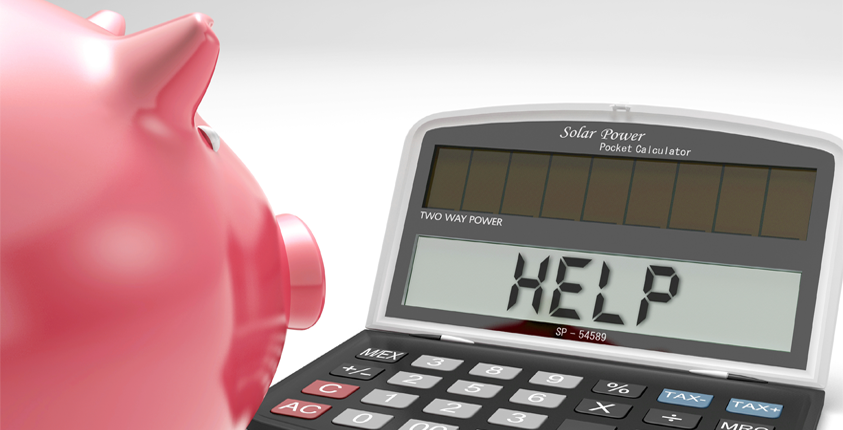Estimated Taxes: 5 Frequently Asked Questions

Most of you who earned your first 1099 will likely file Schedule C (sole proprietor) with your first year of income. Some of you may have set up an LLC, but are still uncertain how exactly money gets from the check that got deposited in your bank account to the IRS for federal taxes and your state for state income taxes. In order to avoid this scary feeling of tax uncertainty, freelancers and independent contracts should become acquainted with the concept of estimated taxes. Let’s look at what estimated taxes are and discuss who needs to pay them.
1. What Is Estimated Tax?
Estimated tax is the method used to pay tax on income that is not subject to withholding. This includes income from self-employment, interest, dividends, alimony, rent, gains from the sale of assets, prizes and awards. You also may have to pay estimated tax if the amount of income tax being withheld from your salary, pension, or other income is not enough.
Estimated tax is used to pay income tax and self-employment tax, as well as other taxes and amounts reported on your tax return. If you do not pay enough through withholding or estimated tax payments, you may be charged a penalty. If you do not pay enough by the due date of each payment period you may be charged a penalty even if you are due a refund when you file your tax return.
2. Who Must Pay Estimated Tax?
If you are filing as a sole proprietor, partner, S corporation shareholder, and/or a self-employed individual, you generally have to make estimated tax payments if you expect to owe tax of $1,000 or more when you file your return.
If you are filing as a corporation you generally have to make estimated tax payments for your corporation if you expect it to owe tax of $500 or more when you file its return.
If you had a tax liability for the prior year, you may have to pay estimated tax for the current year. See the worksheet in Form 1040-ES (PDF) for more details on who must pay estimated tax.
3. How Do You Pay Estimated Tax?
If you are filing as a sole proprietor, partner, S corporation shareholder and/or a self-employed individual, you should use Form 1040-ES, Estimated Tax for Individuals (PDF), to figure and pay your estimated tax. For specific information on how to pay online, by phone, or by mail, refer to the section titled “How to Pay Estimated Tax.” For additional information on filing as a sole proprietor, partners, and/or S corporation shareholder, refer to Publication 505, Tax Withholding and Estimated Tax.
If you are filing as a corporation you should use Form 1120-W, Estimated Tax for Corporations (PDF), to figure the estimated tax. You must deposit the payment using the Electronic Federal Tax Payment System. For additional information on filing for a corporation, refer to Publication 542, Corporations.
4. How Much Estimated Tax Should I Pay?
To figure your estimated tax, you must figure your expected adjusted gross income, taxable income, taxes, deductions, and credits for the year.
When looking at your estimated tax for the current year, it may be helpful to use your income, deductions, and credits for the prior year as a starting point. Use your prior year’s federal tax return as a guide. You can use the worksheet in Form 1040-ES (PDF) to figure your estimated tax. Estimate the amount of income you expect to earn for the year. If your estimated earnings were too high or too low, simply complete another Form 1040-ES worksheet to refigure your estimated tax for the next quarter. It’s important that you estimate your income as accurately as possible to avoid penalties.
You must make adjustments both for changes in your own situation and for recent changes in the tax law.
5. When Should I Pay Estimated Taxes?
For estimated tax purposes, the year is divided into four payment periods. Each period has a specific payment due date. If you do not pay enough tax by the due date of each of the payment periods, you may be charged a penalty even if you are due a refund when you file your income tax return. If it is easier to pay your estimated taxes weekly, bi-weekly, monthly, etc. you can, as long as you have paid enough by the end of the quarter. Using the Electronic Federal Tax Payment System (EFTPS), you can access a history of your payments, so you know how much and when you made your estimated tax payments.
There can be substantial penalties if you don’t withhold enough estimated taxes, so it is best to check with your CPA, accountant, and/or financial advisor. Estimated taxes are one of the most confusing arenas for new 1099 independent contractors, so get in front of this steamroller or you could be part of the pavement this year.
[latest_posts header=”More on Taxes” limit=”” category=”4″]
